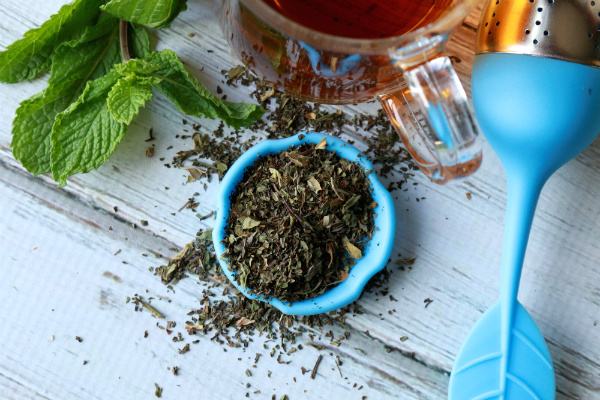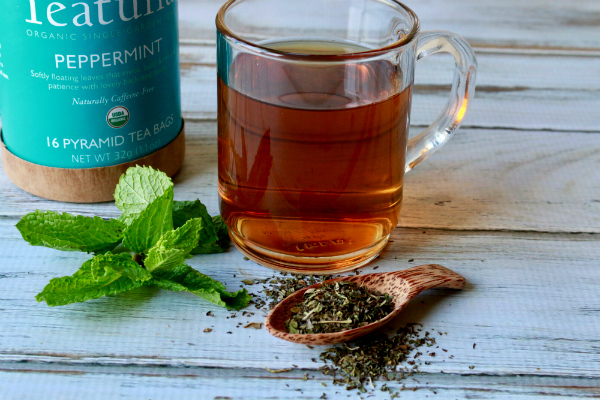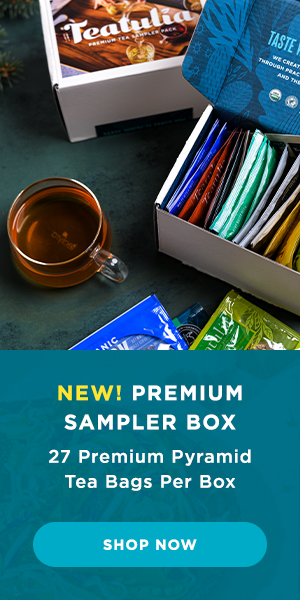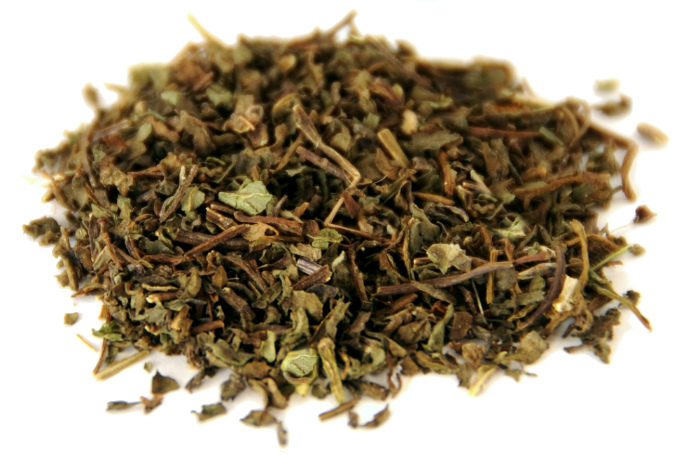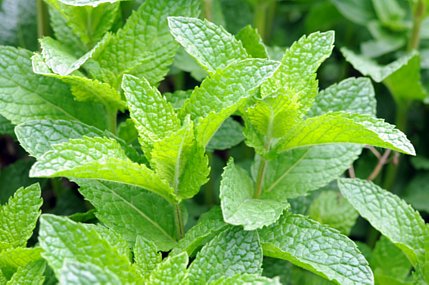Peppermint (M. balsamea Willd) happens to be one of the most versatile plants around. It is used medicinally, in hygiene products, for cooking, in beverages, and even as an ingredient in insecticides.
At Teatulia®, we love peppermint because it grows amazingly well in our USDA-certified organic tea garden in Bangladesh. We harvest our peppermint and turn it into one of our favorite herbal beverages to sip, our Organic Peppermint Herbal Infusion. Our herbal infusion has a unique, buttery, minty-fresh flavor that will awaken the senses and soothe the soul.
But while we tend think about peppermint as an herbal tea beverage first, there are so many fascinating facts and amazing applications for this well-known herb.
It's Popular
Peppermint is the most familiar and popular of the estimated 25 mint species in existence. It’s naturally occurring hybrid mint—a cross between watermint and spearmint—that's indigenous to Europe and Asia.
Peppermint is now cultivated worldwide. In North America, peppermint is grown commercially, almost exclusively, in the northern and eastern portion of the U.S. and the southernmost areas of Canada.
Fun facts: The U.S. produces approximately half the world's peppermint, with Michigan leading the states in most acres of peppermint under cultivation.
It's Prolific
Peppermint is fast growing. The herb grows 2 to 3 feet tall and blooms from mid to late summer, sprouting purple to white flowers and dark green, fragrant leaves. Once it sprouts, peppermint spreads very quickly and could be considered to be invasive. For the home gardener, peppermint is often grown in containers to restrict rapid spreading.
Peppermint acts as a good companion plant or insecticide, repelling pest insects and attracting beneficial ones. Care should be taken, however, when planting this mint variety near other plants. Due to its rapid growth, it tends to take over.
Harvesting the leaves of this fast-growing plant can be done at any time. Fresh leaves should be used immediately or stored up to a couple of days in plastic bags within a refrigerator. Mint leaves can also be frozen in ice cube trays for use later in drinks or culinary applications. Dried mint leaves should be stored in an airtight container and placed in a cool, dark area away from moisture.
It's Practical
Because of its high menthol content, which gives peppermint its characteristic aroma and flavor, the leaves are harvested and its oils extracted for use as a flavoring in breath fresheners, drinks, ice cream, chewing gum, mouthwash, toothpaste, and most popularly in tea. Of the peppermint oil produced in the U.S., 45% is used for flavoring in chewing gum, 45% in oral hygiene products, and the remaining 10% in foods, pharmaceutical applications, flavor for liqueurs and aromatherapy products.
There are so many wonderful, practical applications for this prolific plant. Here are just a few of our favorites we found.
Peppermint Extract
Ingredients:
- 1 large bunch of peppermint leaves
- 1 to 2 cups of vodka
- Sealable jar
Directions:
1. Rinse mint leaves thoroughly and squeeze dry with your hands to bruise the leaves Bruising allows the menthol to be released from the leaves.
2. Place the leaves in a jar and pour vodka over them. The amount of vodka used should be double the amount of leaves. Make sure the vodka fully covers the peppermint leaves.
3. Cover the jar with a lid and allow to steep for at least one month in a cool, dark place.
4. After one month as elapsed, taste the extract to make sure it has developed the flavor and intensity you desire. If not, allow to steep longer.
Peppermint Pest Patrol Spray
The peppermint plant is not only a good deterrent for pests in a garden but the oil can be used in the home to keep away insects. Peppermint has a strong scent that many pests find irritating.
Ingredients:
- Spray cleaning bottle full of warm water
- 1 tablespoon peppermint oil
Directions:
Add peppermint oil to the spray bottle with warm water. Shake vigorously and spray areas where pests enter the home, such as around the door, windowsills and exterior of the home. You can even spray your garden for an environmentally friendly pesticide. Repeat these steps once a month and you’ll notice a significant decrease in unwanted visitors.
Mindful Mint Spray
Ingredients:
- Small spray bottle full of filtered water
- 10 to 20 drops of peppermint oil
Directions:
Add peppermint oil to spray bottle full of filtered water. Shake to combine. Use as a room spray or body spray on head, face or feet. (Be sure to avoid getting it in your eyes.)
Minty Mouthwash
Ingredients:
- 1 cup water
- 1 teaspoon baking soda
- 3 drops of peppermint oil
Directions:
Mix all ingredients in a jar and shake well. Use daily and keep stored in a cool, dry place.
Deodorizing:
Known in Greek mythology as the herb of hospitality, one of peppermint's first known uses in Europe was as a room deodorizer. The leaves were strewn across floors to cover the smell of the hard-packed soil. The same can be done today to get rid of unwanted odors in any room of your house.
Room Re-Energizer
Ingredients:
- Jar full of baking soda
- 3 to 5 drops of peppermint oil
Directions:
Put a few drops of peppermint essential oil in a jar filled with baking soda. Shake to combine and sprinkle on your carpet, in your vacuum cleaner or in a trashcan as a deodorizer.
Mood altering:
Aromatherapy is the use of plant essential oils for altering a person's mood. In aromatherapy, essential oils are often massaged into the skin, inhaled through vaporizers or sprays, or mixed into a bath. It is believed the "smell" receptors in the nose communicate with the parts of the brain that control emotions and memories. When you breathe in essential oil molecules, it stimulates these parts of your brain and is said to influence physical, emotional and mental health. The essential oil of peppermint is known to be cooling, stimulating and uplifting.
Culinary companion:
Cooking is by far the most popular use for peppermint. Used as a garnish or as a key ingredient in meals, fresh peppermint leaves are a nice addition to many recipes. Peppermint extract is frequently used to flavor candies, desserts and liqueurs. You can easily make your own extract at home with peppermint, alcohol and a little patience. And peppermint leaves (fresh or dried), extract or essential oil can also be used for brewing your own herbal mint tea infusion at home.
Peppermint Herbal Tea<
Ingredients:
- 1 small bunch of peppermint leaves (or 1 drop of peppermint oil or 2 to 3 drops of peppermint extract)
- Enough boiling water to fill a teapot
- Honey, optional
Directions:
Combine peppermint leaves and boiling water in a teapot. Cover and let steep for 10 minutes. Pour in a teacup, sweeten and enjoy! (Note: If you are using peppermint oil or extract, simply add drops to the hot water, sweeten if necessary, and enjoy immediately.)
